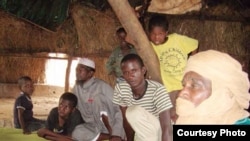The International Organization for Migration, IOM, reports that internally displaced people in Mali are leaving Bamako and other cities. They’re returning home to northern regions of the country once considered unsafe such as, Timbuktu, Gao, and Kidal.
The IOM’s Displacement Tracking Matrix, DTM, reports the total number of people returning to the north rose from an estimated 196,000 in February to 284,000 people in April. In the south, the Bamako region continues to host 40,733 people, the largest number of displaced people in the country.
Bakary Doumbia, the IOM’s chief of mission in Bamako, explained that the movement is “a good sign … because it shows that there is certain stability in the north --although we can see that from time to time we have some pockets of insecurity.”
“When we asked the returnees what made them go back,” he added, “ all of them-- they give us improvements in security.”
However, Doumbia emphasized there are still many challenges facing returnees.
“We can say that conditions are even worse than what they were before the people left the north. Many of the water points that existed before [are no longer functioning], due to problems of maintenance, given that there was no good connection between the northern part and the southern part,” explained Doumbia.
He also pointed out that people have not been able to cultivate their land because they had fled, which makes food security another big challenge. In addition their homes have not been maintained for the past two years, and as a result have deteriorated.
Despite the many problems that await the returnees, people are continuing to make the journey back home.
The IOM’s Displacement Tracking Matrix, DTM, reports the total number of people returning to the north rose from an estimated 196,000 in February to 284,000 people in April. In the south, the Bamako region continues to host 40,733 people, the largest number of displaced people in the country.
Bakary Doumbia, the IOM’s chief of mission in Bamako, explained that the movement is “a good sign … because it shows that there is certain stability in the north --although we can see that from time to time we have some pockets of insecurity.”
“When we asked the returnees what made them go back,” he added, “ all of them-- they give us improvements in security.”
However, Doumbia emphasized there are still many challenges facing returnees.
“We can say that conditions are even worse than what they were before the people left the north. Many of the water points that existed before [are no longer functioning], due to problems of maintenance, given that there was no good connection between the northern part and the southern part,” explained Doumbia.
He also pointed out that people have not been able to cultivate their land because they had fled, which makes food security another big challenge. In addition their homes have not been maintained for the past two years, and as a result have deteriorated.
Despite the many problems that await the returnees, people are continuing to make the journey back home.









